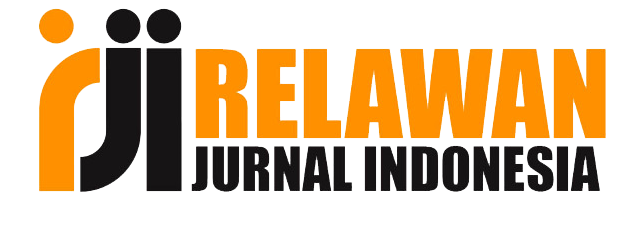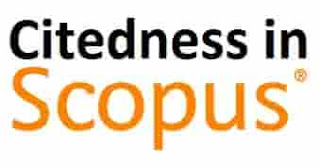The Indonesian grammatical interference on EFL students’ writing
DOI:
https://doi.org/10.33474/j-reall.v1i1.5610Keywords:
Indonesian grammatical interference, EFL writing, L1 and L2 differences, descriptive qualitativeAbstract
This research was aimed to find out what factors of the occurrence of Indonesian grammar interference in EFL students’ writing and what type of Indonesian grammar interference occur in EFL students’ writing. To answer the research problem on Indonesian grammatical interference, a descriptive qualitative was done by taking the fourth semester students of English Department STKIP PGRI Tulungagung as the subject of the research. Further, the data related to the Indonesian grammar interference were taken using test and observation. The result of data analysis shows that the students still got interference from Indonesian grammar as their native language. The grammatical interference in this research is classified into two; syntactical interference and morphological interference. The syntactical interference consists of word order, preposition, extra word and missing word. The most interference in syntactical interference is on preposition. The morphological interference consists of omission of determiner, wrong determiner, subject-verb agreement, be form, tenses usage, singular and plural form. The most interference in morphological interference is omission of determiner. From the observation, it was found that the cause of interference is the different structure of Indonesian and English grammar. Moreover, the students usually wrote it first in Indonesian and later translated into English.
References
Arikunto, S. (2010). Prosedur Penelitian. Suatu Pendekatan Praktek. Jakarta: RinekaCipta.
Ary, D., Lucy, C. J. &Razavieh, A. (2010). Introduction to Research in Education (8thEdition). Belmont:Wadsworth.
Berg, B.L (2001). Qualitative Research Methods for the Social Sciences. California; Pearson Education.
Brown, H. D. (2001). Teaching by Principles an Interactive Approach to Language Pedagogy. New York: Pearson Education,Inc.
Chitravelu, N. (2007). ELT Methodology Principles & Practice (second edition). Malaysia: Oxford Fajar.
Creswell John W. 2012. Research Design Edition Qualitative, Quantitave and Mixed Methods Approaches 4th Edition. London: Sage Publication.
Dulay, H., Burt, M., & Krashen, S. (1982). Language Two. New York: Oxford University Press.
Ellis, R. (1986). Understanding Second Language Acquisition. New York:Oxford University Press.
Hedge,T.(2005). Writing. London: Oxford University Press.
Hughes, A. (1989). Testing for Language Teachers. Melbourne: Cambridge. University Press.
Hyland, K. (2003). Second Language Writing. Cambridge: Cambridge University Press.
Irmalia, M. (2016). Indonesian Interference in Students' Writing. English Education Journal, 7 (4), 498-508. Retrieved fromhttp://www.jurnal.unsyiah.ac.id/EEJ/article/view/5535.
Lincoln, Y.S., & Guba, E.G. (1985). Naturalistic Inquiry. Beverly Hills, CA: Sage.
Martanti, P. (2011). An analysis of grammatical interference in articles of Berani Newspaper. (Undergraduate thesis, Universitas Islam Negeri SyarifHidayatullah Jakarta, Jakarta,Indonesia). Retrieved fromrepository.uinjkt.ac.id.
Naidu, M. 2(007). The Use of Written Feedback and Conferencing in Improving Students' Writing. Retrieved from http://eprtp://kola.opus.hbz-nrw.de/volltexte/2008/271/
Oshima, A. & Hogue, A. (2007). Introduction to Academic Writing (Third Edition). United States of America: Pearson Education Inc.
Pudiyono. (2012). Indonesian grammatical interference toward the students' spoken and written English. International Journal of Educational Studies, 4 (2), 229-244. Retrieved
from http://www/educare-ijes.com/educarefiles/File/09.pudiyono.ump.pdf.
Richards,J.,Platt,J.,Weber,H., & Inman, P. (2010). Longman Dictionary of Applied Linguistics. London:Pearson.
Septiana, A.R., Sulistyo, G.H.,Kadarisman, A.E. (2016). Corrective feedback and writing accuracy across different levels of grammatical sensitivity. Indonesian Journal of Applied Linguistics, 6 (1), 1- 11.http://dx.doi.org/10.17509/ijal.v6i1.2642
Shahin,N.(2011).Error Treatmentin TESOL Classroom. Jordan Journal of Applied Science: Humanities Series, 13 (1)., 207-226. Retrieved from http://www.asu.edu.jo/asu/userfiles/file/ HumanitiesSeries.pdf.
Suwito. (1983). Pengantar Awal Sosiolinguistik Teori dan Praktik. Surakarta: Henary Offset.
Weinrich, U. 1953. Language in Contact: Finding and Problems. New York: Mouton Publishers.
Yeasmin, S., & Rahman, K.F. (2012). 'Triangulation' research methods as the tools of social science research. BUP Journal, 1 (1), 154-163.
Yule, G. (2010). The Study of Language (4th Edition). Cambridge: Cambridge University Press.
Downloads
Published
How to Cite
Issue
Section
License
Copyright (c) 2020 Ayu Rizki Septiana

This work is licensed under a Creative Commons Attribution 4.0 International License.
Authors who publish this journal agree to the following terms:
- Authors retain copyright and grant the journal right of first publication with the work simultaneously licensed under a Creative Commons Attribution License that allows others to share the work with an acknowledgement of the work's authorship and initial publication in this journal.
- Authors can separately make additional contractual arrangements for non-exclusive distribution published by the journal (e.g., publish it in a book), with an acknowledgement of its initial publication in this journal.
- Authors are allowed and encouraged to send their work via online (e.g., in the institutional repositories or their website) after published by the journal.






















